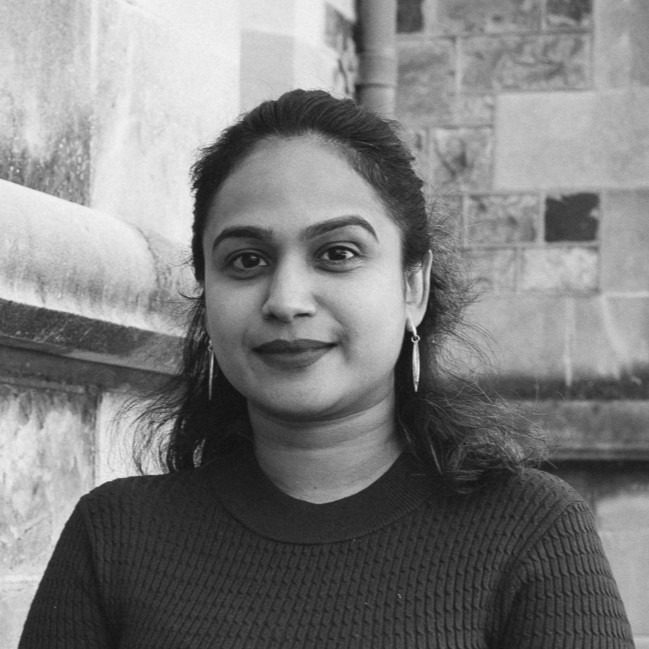Five minutes with Sathya
Sri Lankan planner, and University of South Australia masters student, Sathya Meepagala has been supporting our planning team over the summer months.
What kind of planning work did you do in Sri Lanka?
I have worked in both strategic planning and development assessment in Sri Lanka as an Assistant Planning Officer for two years and as a Town Planner for four years.
In strategic planning I worked on the Sri Jayewardenepura Administrative Capital City Planning, conducted 30 years after the initial plan, which aimed to promote the sense of image of the Administrative Capital in Sri Jayewardenepura Kotte, Sri Lanka.
I have also worked on three Tourism Master Plans: Arugambay, Ella, and Nuwara Eliya, and more than 20 development projects, including: Frolic Island Recreational Hub, Malabe Smart City Project, Madiwala Urban Agriculture Project, and President and Prime Minister House and Office Relocation Project.
As a Development Assessment Town Planner for the Urban Development Authority I undertook site inspections, preparing assessment reports, presented to Planning Committees and other tasks similar to tasks planners do in SA.
I also initiated a “Planning for Healthy City” webinar series – a platform to promote health aspects in planning.
What projects have you been working on at Jensen PLUS and what have you learned through this work?
Lately at Jensen PLUS, I’ve been involved in a mix of planning, strategic mapping, and research projects. I’ve assisted with Encumbrance Approvals for a major urban renewal project, and prepared planning reports for projects like the Alberton Railway Station community centre. This has given me hands-on experience in development assessments and the challenges of adapting spaces for new uses.
On the strategic planning side, I’ve worked on mapping for the Bagdad and Mangalore Structure Plan and an Employment Strategy we are working on in inner Adelaide, helping to visualise key planning data.
Additionally, I’ve delved into research on carbon farming, cycling, and walkability – topics that highlight the intersection of sustainability and urban planning.
How different is planning in Sri Lanka, compared to South Australia?
Sri Lanka and South Australia take very slightly different approaches to strategic planning and development assessment. In Sri Lanka, the National Physical Planning Department oversees planning, while the Urban Development Authority (UDA) handles zoning and development regulations.
Town planners are responsible for preparing plans and enforcing regulations, but a lot of these plans end up collecting dust on bookshelves instead of being put into action. Political influence, lack of funding, and weak monitoring make it hard to turn strategies into reality – though zoning rules are still enforced.
South Australia, on the other hand, has a more structured and efficient system. The State Planning Commission oversees planning, with local governments and accredited professionals handling many development assessments. It appears to me that many strategies get implemented, and a fully online system makes the process more transparent and accessible.
Unlike Sri Lanka, South Australia has a standardized zoning system that ensures fairness, though it may not always reflect the unique character of different areas.
When it comes to development approvals, Sri Lanka’s process can be slow and bureaucratic, involving multiple committees and in-person site inspections for every application. External influences often play a role in decisions, making zoning expectations hard to achieve.
I think South Australia has a streamlined assessment process, with online tools like SAPPA giving applicants clear, easy-to-read planning information.
After completing your master’s degree in Urban and Regional Planning at the University of South Australia, what do you intend to do next with your career?
My dream is to become an influential planner in the planning industry of both South Australia and Sri Lanka. My background and experience in Sri Lanka, combined with my studies and experience in South Australia, will help me approach planning from a unique perspective, considering South Australia’s multicultural background. I aim to make a significant impact on the community and its development.
Also, many top-level decision-makers in Sri Lanka believe that planners from well-developed countries can produce better plans than Sri Lankan planners. As a result, they often invite foreign private planning firms to create plans without considering those prepared by Sri Lankan planners. However, these foreign plans are often difficult to implement due to a lack of understanding of the country’s culture, regulations, institutional setup, financial constraints, and data availability.
Therefore, I dream of creating a consultancy plan for Sri Lanka, using my knowledge and experience of both Sri Lanka and South Australia. I aspire to become a well-known planner in Australia and collaborate with a company that Sri Lanka will trust to carry out the plan. I also hope that Jensen PLUS will begin engaging in international planning soon!

